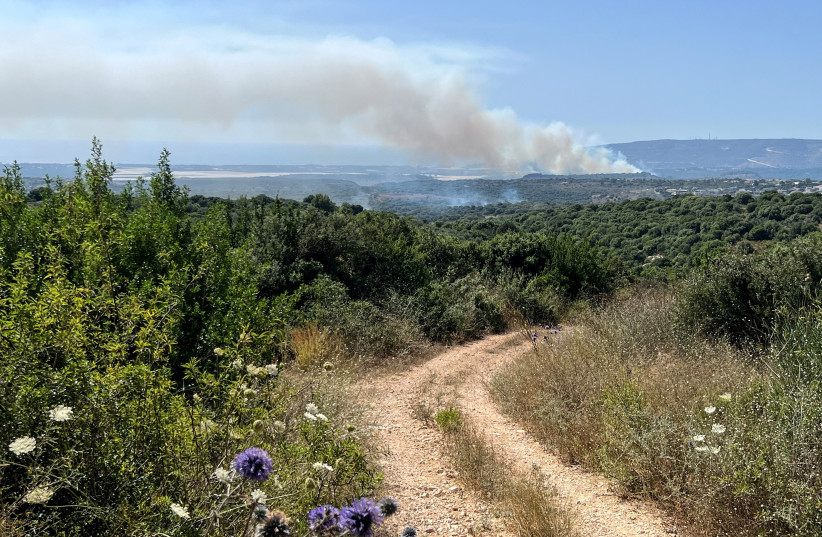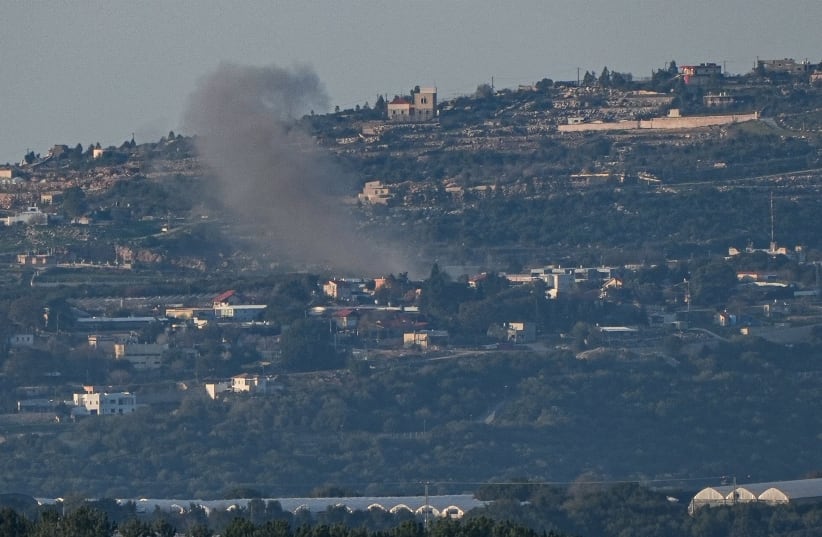An investigation by the Financial Times has claimed that the IDF's operations in southern Lebanon are part of a plan to create a 5 km. "dead zone" on the border.
The FT combined data from satellites along with research from US universities using “synthetic aperture radar” satellites to detect changes in buildings without being affected by cloud cover.
Following the beginning of the war in October, Hezbollah began firing on Israel, with Israel responding in kind.
The report also stated that that over 95,000 Lebanese have been displaced, as well as 60,000 Israelis.
The FT also reported that Israel has killed more Hezbollah commanders in this flare-up than died in the 2006 war.


Hezbollah fighters quoted in the report balked at the idea that they would withdraw from southern Lebanon.
Lebanese officials seemed to hope that a wider war could be stemmed by the creation of a buffer zone and a diplomatic solution.
The IDF denied it was creating a buffer zone. The IDF claimed it was only pushing back Hezbollah in order to prevent persistent attacks on Israeli residents of the North.
Many Lebanese have only been able to return to their villages during funerals, which appear to be one of the few respites from airstrikes.
"Every day, the destruction is getting worse," Hassan Shayt, mayor of Kfar Kila, told FT.
A new era of war
"The damage is massive," Hashem Haidar, the head of Lebanon’s Southern Council, said.
"The type of weaponry that’s being used is different from what we saw in 2006. Before, when a house was bombed, the damage would be confined to the house and its immediate surroundings. Now, there are entire neighborhoods that are being affected by one bombing."
A senior Israeli military official defending their position said, "Every third home in south Lebanon is used by Hizbollah for weapons storage, training, firing positions, and meeting points for a possible cross-border attack."
Several residents of targeted villages told FT that they believed that Israel was targeting the homes of people who returned to retrieve their belongings. Some of them noted that within two hours of returning to retrieve their belongings, the IDF had struck their house.
However, the FT also reported that soon after an airstrike they witnessed, Hezbollah fighters told them that their fighters had been hiding and storing weapons in abandoned homes.
There were also questions raised about Israel's tactics for clearing brushland near the border, with several clips of Israeli troops employing unconventional methods, such as the use of trebuchets to launch flaming projectiles across the border and even flaming arrows.
Wow. Fighting Middle Age-mindset terrorists with Middle Age technology.The IDF soldiers built a TREBUCHET to clear foliage/bushes that Hezbollah have been hiding in and firing from.pic.twitter.com/24cURSYdw2
— Kosher (@KosherCockney) June 13, 2024
They also raised issues regarding Israel's use of white phosphorus in combat. Israel claims that the use of white phosphorus is in line with international law and is strictly used for smokescreens and not fired at combatants.
העדכון החדש של מייפל סטורי נראה מטורף pic.twitter.com/x2cmBJUm9i
— David Yerman (@davidyerman) June 13, 2024
Although local mayors claim that this use has contaminated agricultural land, that may take years to undo, with some estimates of over $1.7 billion in damage.
